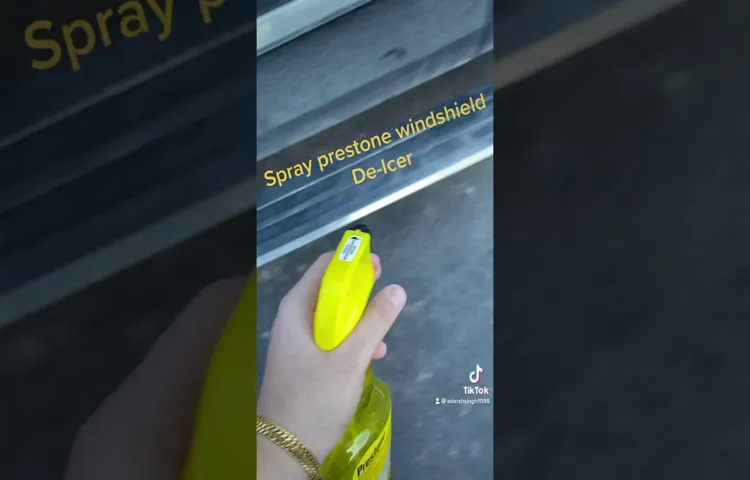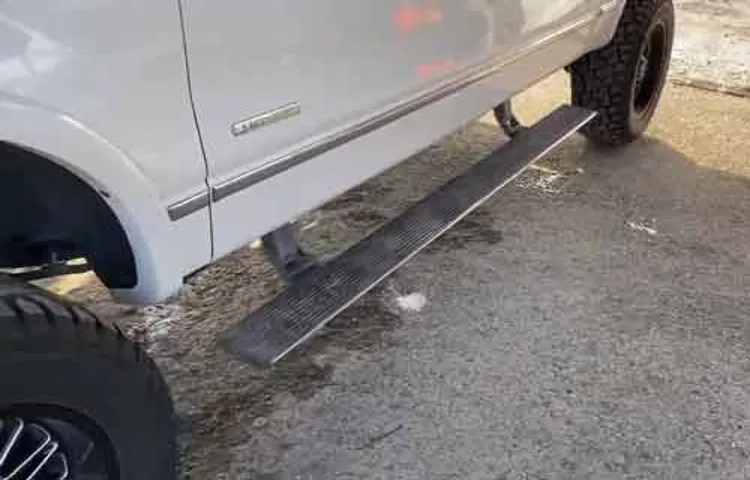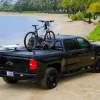Imagine this scenario: you’re getting into your car, ready to hit the road, when suddenly, your power running board malfunctions. You press the button, but nothing happens. Frustrated, you quickly realize that you’re unable to enter or exit your vehicle without the help of the running board.
What do you do now? Don’t panic, because we’ve got you covered. In this blog post, we’ll explore some common power running board problems and provide you with practical solutions to get you back on the road in no time. So buckle up and let’s dive in!
Table of Contents
Understanding Power Running Boards
Have you ever experienced problems with your power running boards? Don’t worry – you’re not alone. Power running boards are a great convenience feature on vehicles, but like any electronic component, they can sometimes encounter issues. The first thing you should do if you encounter any problems with your power running boards is to check the fuse.
A blown fuse can often be the cause of the problem, and replacing it may solve the issue. If the fuse is fine, then it’s time to check the wiring and connections. Loose or damaged wiring can cause the power running boards to malfunction.
Make sure all the connections are secure and undamaged. If the issue still persists, it may be time to bring your vehicle to a professional mechanic or dealership. They will have the expertise and specialized equipment to diagnose and repair any more complex issues with your power running boards.
Don’t let power running board problems discourage you from enjoying the convenience they offer. With a little troubleshooting and perhaps some professional help, you’ll have them working perfectly in no time.
How Power Running Boards Work
power running boards are retractable step boards that are installed along the sides of SUVs and trucks. They provide a convenient and safe way for passengers to easily enter and exit the vehicle, especially for those with limited mobility. Power running boards are controlled by an electronic motor that extends and retracts the step boards with just the push of a button.
When the vehicle door is opened, the power running boards automatically deploy, providing a sturdy and stable step for passengers to use. Once the door is closed, the power running boards retract back to their original position, seamlessly blending into the vehicle’s exterior. These advanced and innovative power running boards not only enhance the functionality of the vehicle but also add a touch of elegance and convenience.
Whether you’re getting in or out of the vehicle, power running boards make the process effortless and enjoyable.

Common Power Running Board Problems
power running boards problems, power running board issues, troubleshooting power running boards. Power running boards are a great feature to have on your vehicle, as they offer convenience and ease of use. However, like any mechanical component, they can sometimes experience problems.
Understanding common power running board problems can help you troubleshoot and address these issues quickly and effectively. One of the most common problems with power running boards is that they may get stuck in the extended or retracted position. This can be caused by a variety of issues, such as a faulty motor, a loose or disconnected wiring harness, or debris obstructing the movement of the boards.
In some cases, the problem may be as simple as a blown fuse, which can easily be replaced. Another common issue with power running boards is that they may not deploy or retract smoothly. This can be caused by a lack of lubrication on the moving parts, worn-out components, or a misalignment of the boards.
Regular maintenance, such as cleaning and lubricating the boards, can help prevent these problems from occurring. In some cases, power running boards may make unusual noises during operation. This can be a sign of a mechanical problem, such as a worn-out motor or a loose connection.
If you hear any strange sounds coming from your power running boards, it’s important to have them inspected and repaired as soon as possible to prevent further damage. It’s worth noting that power running boards can be sensitive to extreme weather conditions, such as excessive heat or cold. Over time, these conditions can cause the boards to warp or malfunction.
To prevent weather-related problems, it’s important to park your vehicle in a sheltered area or use protective covers when necessary. In conclusion, power running boards can enhance the functionality and appearance of your vehicle, but they may experience problems from time to time. By understanding common issues and performing regular maintenance, you can keep your power running boards in optimal condition and enjoy their benefits for years to come.
Troubleshooting Power Running Board Problems
If you’re experiencing power running board problems, there are a few steps you can take to troubleshoot the issue. First, check the power source. Make sure the vehicle’s battery is fully charged and that all connections are secure.
If the power source is working properly, the next step is to inspect the control module. This module controls the operation of the power running boards, so if it’s faulty, the boards may not function correctly. Look for any signs of damage or corrosion on the module and its connections.
If everything looks fine with the power source and control module, then it’s time to test the running boards themselves. Check for any physical obstructions that may be preventing the boards from extending or retracting properly. Additionally, make sure that the boards are properly lubricated as lack of lubrication can cause them to become stuck.
By following these troubleshooting steps, you should be able to diagnose and resolve any power running board problems you may be experiencing.
Step 1: Check for Power Supply
power running board problems, power supply, troubleshooting power running board
Step 2: Inspect for Physical Damage
power running board problems, inspect for physical damage Step 2 of troubleshooting power running board problems involves inspecting for physical damage. Physical damage can be a common cause of issues with power running boards. It’s important to visually inspect the running boards for any signs of damage, such as bent or misaligned components, broken hinges, or cracked panels.
Check the entire length of the running board, paying attention to both the top and bottom surfaces. Look for any dents, scratches, or other noticeable damage. It’s also essential to examine the wiring harness that connects the power running board to the vehicle’s electrical system.
Make sure the wires are securely connected, free from any fraying or exposed areas, and not pinched or damaged in any way. Physical damage can prevent the power running board from properly retracting or deploying, so thoroughly inspecting for any signs of damage is crucial in troubleshooting and resolving any problems.
Step 3: Test the Control Module
power running board problems
Step 4: Clean the Power Running Board
power running board, clean, troubleshooting If you’re experiencing problems with your power running board, one of the first troubleshooting steps you can take is to clean it. Over time, dirt, debris, and even rust can accumulate on the power running board, causing it to malfunction or become stuck. Start by removing any loose debris from the board using a brush or vacuum.
Then, use a mild soap and water solution to clean the surface of the board, making sure to remove any dirt or grime. Be careful not to use any abrasive cleaners or tools that could damage the board. Once the board is clean, dry it thoroughly before testing it to see if the problem has been resolved.
If the issue persists, there may be a more serious underlying problem that requires professional assistance.
When to Seek Professional Help
If you are experiencing power running board problems in your vehicle, there are a few steps you can take before seeking professional help. First, check to see if the problem is simply a matter of a blown fuse. This is a common issue and can easily be fixed by replacing the fuse.
Next, you can try resetting the system by disconnecting the battery for a few minutes and then reconnecting it. This can sometimes resolve minor electrical issues. If these steps do not fix the problem, it may be time to seek professional help.
A mechanic will have the knowledge and tools to diagnose and repair any more complex issues with your power running boards. It’s important to address these issues promptly, as malfunctioning power running boards can be a safety hazard.
Preventing Power Running Board Problems
If you’re experiencing power running board problems, there are a few steps you can take to prevent further issues. First, it’s important to regularly clean and maintain your power running boards. Over time, dirt and debris can accumulate, causing them to become clogged or stuck.
By cleaning them regularly, you can help prevent these issues and ensure smooth operation. Additionally, inspect the wiring and connections to make sure everything is secure and in good condition. Loose or damaged wiring can lead to power running board malfunctions.
If you notice any problems, it’s best to address them as soon as possible to prevent further damage. Finally, be mindful of any excessive weight or impact on the power running boards. They are designed to support a certain amount of weight, so overloading them or subjecting them to heavy impact can cause them to malfunction.
By following these tips, you can help prevent power running board problems and ensure their longevity.
Conclusion
In conclusion, dealing with power running board problems can be a real pain in the trunk, but fear not! We’ve provided you with a foolproof guide to tackle these pesky issues head-on. Remember to start with the basics, checking connections and fuses, and then move on to the more advanced troubleshooting techniques if necessary. And if all else fails, don’t be afraid to whip out your DIY skills or call in the expert reinforcements.
With determination and a little bit of electrical magic, you’ll have those power running boards back in action in no time. So, put on your problem-solving hat, grab your wrenches, and let’s get this power party rolling!”
FAQs
What are the common power running board problems?
Common power running board problems include malfunctioning motors, stuck or jammed boards, faulty sensors, and electrical issues.
How can I diagnose power running board problems?
You can diagnose power running board problems by checking the fuses, inspecting the wiring connections, testing the motors, and using a diagnostic tool to scan for error codes.
Can I fix power running board problems myself?
While some power running board problems can be fixed by DIY enthusiasts, it is recommended to consult a professional technician, especially for complex issues or electrical problems.
How much does it cost to repair power running board problems?
The cost of repairing power running board problems can vary depending on the specific issue and the make and model of your vehicle. It is best to obtain quotes from multiple repair shops for an accurate estimate.
Can power running board problems lead to safety concerns?
Yes, power running board problems can compromise the safety of passengers, especially if the boards get stuck in an extended or retracted position. It is important to address these issues promptly to avoid any accidents or injuries.
Are power running boards covered under warranty?
Power running boards may be covered under the vehicle’s warranty if the issue is due to a manufacturing defect. However, it is essential to check the terms and conditions of your warranty coverage for specific details.
What preventive measures can I take to avoid power running board problems?
To avoid power running board problems, it is recommended to regularly inspect and clean the boards, keep them lubricated, avoid excessive weight on the boards, and follow the manufacturer’s maintenance guidelines.



